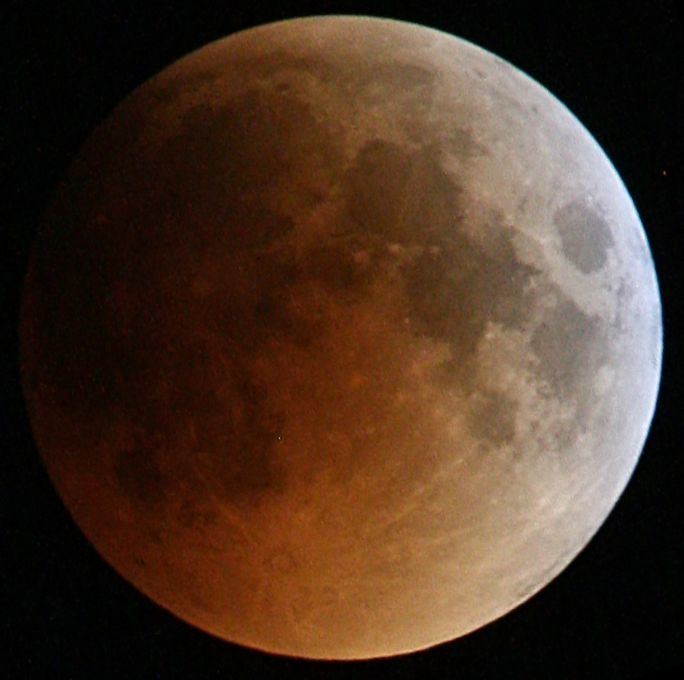 | ||
A total lunar eclipse took place on June 15, 2011. It was the first of two such eclipses in 2011. The second occurred on December 10, 2011.
Contents
This was a relatively rare central lunar eclipse, in which the center point of Earth's shadow passes across the moon. The last time a lunar eclipse was closer to the center of the earth's shadow was on July 16, 2000. The next central total lunar eclipse will be on July 27, 2018 over South America, western Africa, and Europe, and setting over eastern Asia.
Visibility and viewing
In western Asia, Australia, and the Philippines, the lunar eclipse was visible just before sunrise. It was very visible in the clear and cloudless night sky throughout eastern and southeast Asia. Africa, far eastern Russia and Europe witnessed the whole event even in the late stages (as in partial lunar eclipse). The Americas (including North and northwestern South America) missed the eclipse completely (except in most areas) because it occurred at moonset.
According to PAGASA, the presence of pollutants over the metropolis which penetrates the reddish appearance of the moon during the greatest stages of the eclipse and sunlight attracts into the atmosphere in the form of red light in contrast to July 1953 and July 2000 lunar eclipses with the same coloration.
Related eclipses
It was preceded by the partial solar eclipse of January 4, 2011, and the partial solar eclipse of June 1, 2011.
Semester series
This eclipse is the center of nine lunar eclipses in a short-lived series. Each eclipse in the series repeats after one semester (6 lunations or 177 days) occurring at alternating nodes.
Saros series
Lunar saros series 130, repeating every 18 years and 11 days, has a total of 72 lunar eclipse events including 14 total lunar eclipses.
Tritos series
The tritos series repeats 31 days short of 11 years at alternating nodes. Sequential events have incremental Saros cycle indices.
This series produces 23 total eclipses between June 22, 1880 and August 9, 2120.
Inex series
The inex series repeats eclipses 20 days short of 29 years, repeating on average every 10571.95 days. This period is equal to 358 lunations (synodic months) and 388.5 draconic months. Saros series increment by one on successive Inex events and repeat at alternate ascending and descending lunar nodes.
This period is 383.6734 anomalistic months (the period of the Moon's elliptical orbital precession). Despite the average 0.05 time-of-day shift between subsequent events, the variation of the Moon in its elliptical orbit at each event causes the actual eclipse time to vary significantly.
All events in this series listed below and more are total lunar eclipses.
